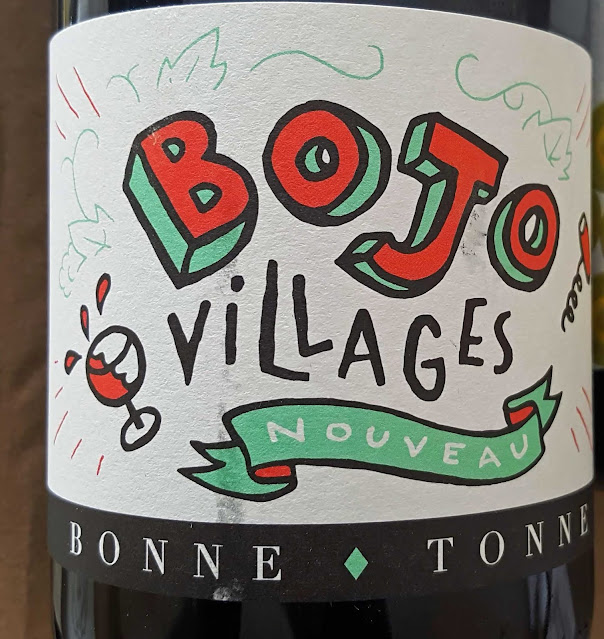Striking Gold with a Riojan white
and a Barbera D’Alba
Izadi Rioja Blanco (DOC) 2019, 13.5%
RRP € 21.99: Blackrock Cellar, Mannings Emporium, Redmonds of Ranelagh, Sweeney's D3, Wineonline.ie
Other than the famous aged Viura by Hacienda López, I know very little about Rioja white. So this blend, led by Viura, turned out to be a very pleasant surprise indeed.
It has a very light straw colour, hints of grey/pink, bright. Aromatic with fruits like melon, and gooseberry showing. Fresh and fruity on the palate, an outstanding first impression. Succulent but with good acidity. The finish is medium to long. That initial impression carries through to the finalé, a superb wine and Very Highly Recommended.
Izadi picks the six native white varieties of Rioja based on the oldest vineyards of the region to elaborate “a very special Blanco”. The blend is 65% Viura, 10% Malvasía, 10% Garnacha Blanca, 5% Tempranillo Blanco, 5% Maturana Blanca y 5% Turruntés, all from the area around Villabuena and the medieval village off Samanmigeo on the road between Haro and Logrono.
Importers Liberty tell us Izadi is owned and run by Lalo Antón and his family. Izadi, which means ‘nature’ in the Basque language, is a project rooted in a passion for gastronomy and wine. The estate was founded in 1987 by Gonzalo Antón, Lalo’s father, who, at the age of 37 and with a background in restaurants, decided to create his own winery with the aim of producing modern, perfumed, food-friendly wines that are true to their roots and a natural expression of the area. As well as the winery, the family also run the Michelin-starred restaurant, Zaldiaran, in nearby Vitoria.
No wonder that it went so well with one of our recent At Home dinners, this a delightful and very different fish box from Goldie in Cork. While not perhaps gelling with every single element, the Izadi proved an able companion that evening. A wine for the notebook for sure! Dinner details here https://www.corkbilly.com/2021/03/goldie-weekend-with-bosca-na-farraige.html
GD Vajra Barbera D’Alba (DOC) 2018, 15%
RRP € 29.99: Alain and Christine Wine and Card Shop; Baggot Street Wines; Blackrock Cellar; C Morton & Sons; Grapevine;
Jus de Vine; McHugh’s Off Licence - Malahide Road; Searsons Wine Merchants; Sweeney's D3; Terroirs; The Cinnamon Cottage, Cork; The Corkscrew; Wineonline.ie
Mid ruby colour. Very pleasantly perfumed, with cherries prominent, even a note of sweetness. Scented and balanced all the way, this elegant wine is concentrated on the palate, full of pristine flavours of red and darker berries, a little spice too, along with a natural acidity and a mellow tannin. Refreshing and refined, this gem (on which oak has been judiciously used) finishes elegantly and is one that you’ll savour and remember. Very Highly Recommended.
Barbera is Piedmont’s most planted red and fitting that the Vajra’s first “task” here was to match with Guancia Di Manzo Topinaburn Al Tarfuto (Slow-cooked Beef Cheek, Barbera D’Asti jus, creamy mash, truffle infused Jerusalem artichokes) from da Mirco’s “At Home” here in Cork. Aside from our Barbera d’Alba, you’ll also hear of its next door neighbours Barbera d’Asti and of Barbera Monferrato (lesser known hereabouts).
GD Vajra have been farming organically since 1971 but they didn’t get off to the best of starts. Giuseppe, during an April online masterclass, said he was dragged away from his soccer games (he was playing too much of it - well he was just 15) to plant his first vineyard.
He and his current team are still youthful and he is proud of their work. “We hope we get wiser as we go on. We started organically and our first vintage in 1972 was not a good one, not worth ageing!” The whole extended family are at work here in this “multicultural team” near the village of Barolo. Perhaps, that first vintage was a disappointment but there have been many good ones since including this 2018.
Vintage summary: 2018 was marked by an abundant flowering, a gradual ripening and one of the latest harvests of the decade. Precipitations were exceptional during the entire year, as was the dedication of Vajra's vineyard team. Such determined work and a meticulous sorting brought only the healthy grapes to the winery, with delicate perfumes and a juice that was pink already upon crushing. This harvest was particularly favourable for the best exposed vineyards, those at high elevation, and the late ripening varietals. The wines are fragrant, deliciously aromatic, with elegant tannins.





























